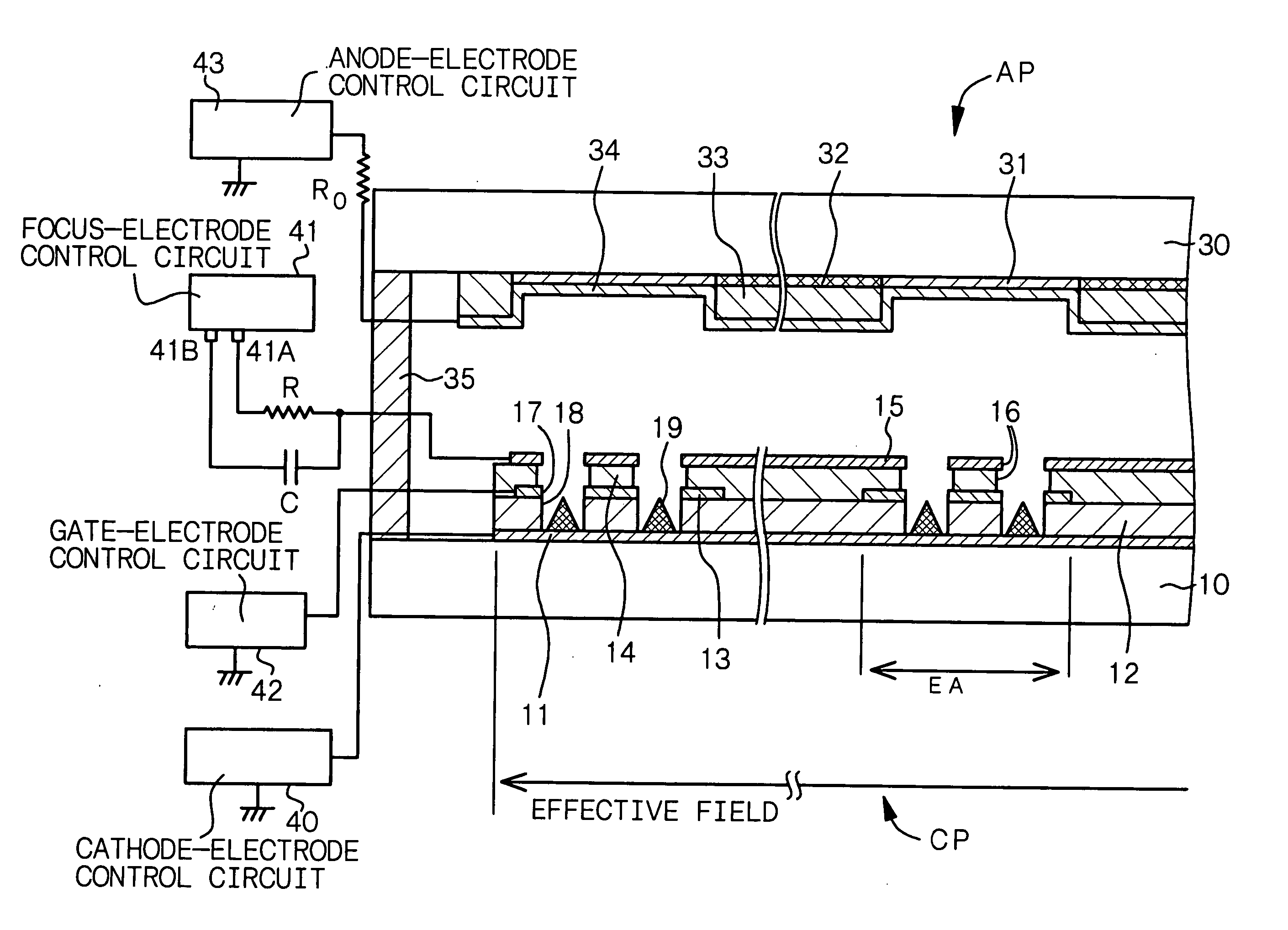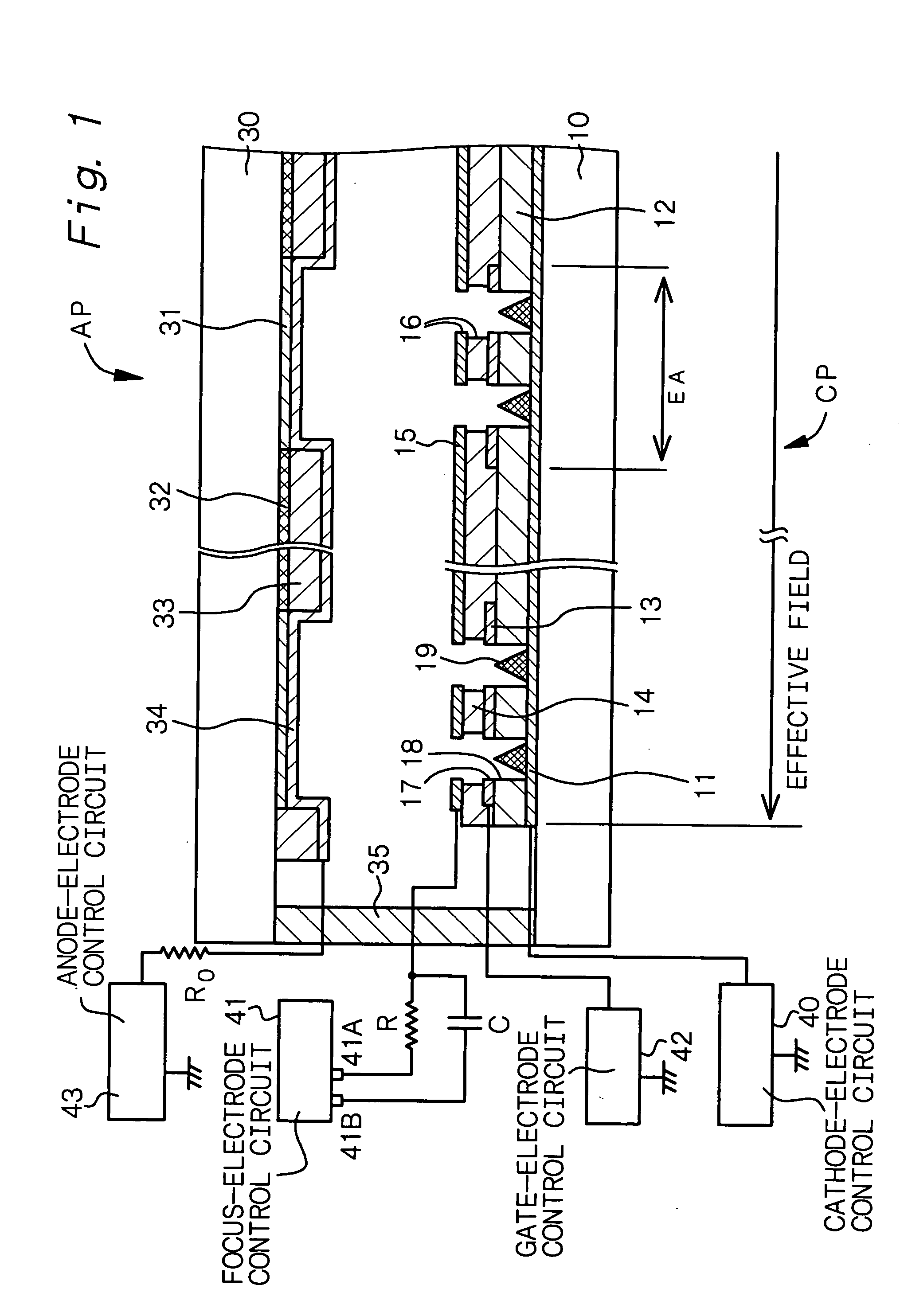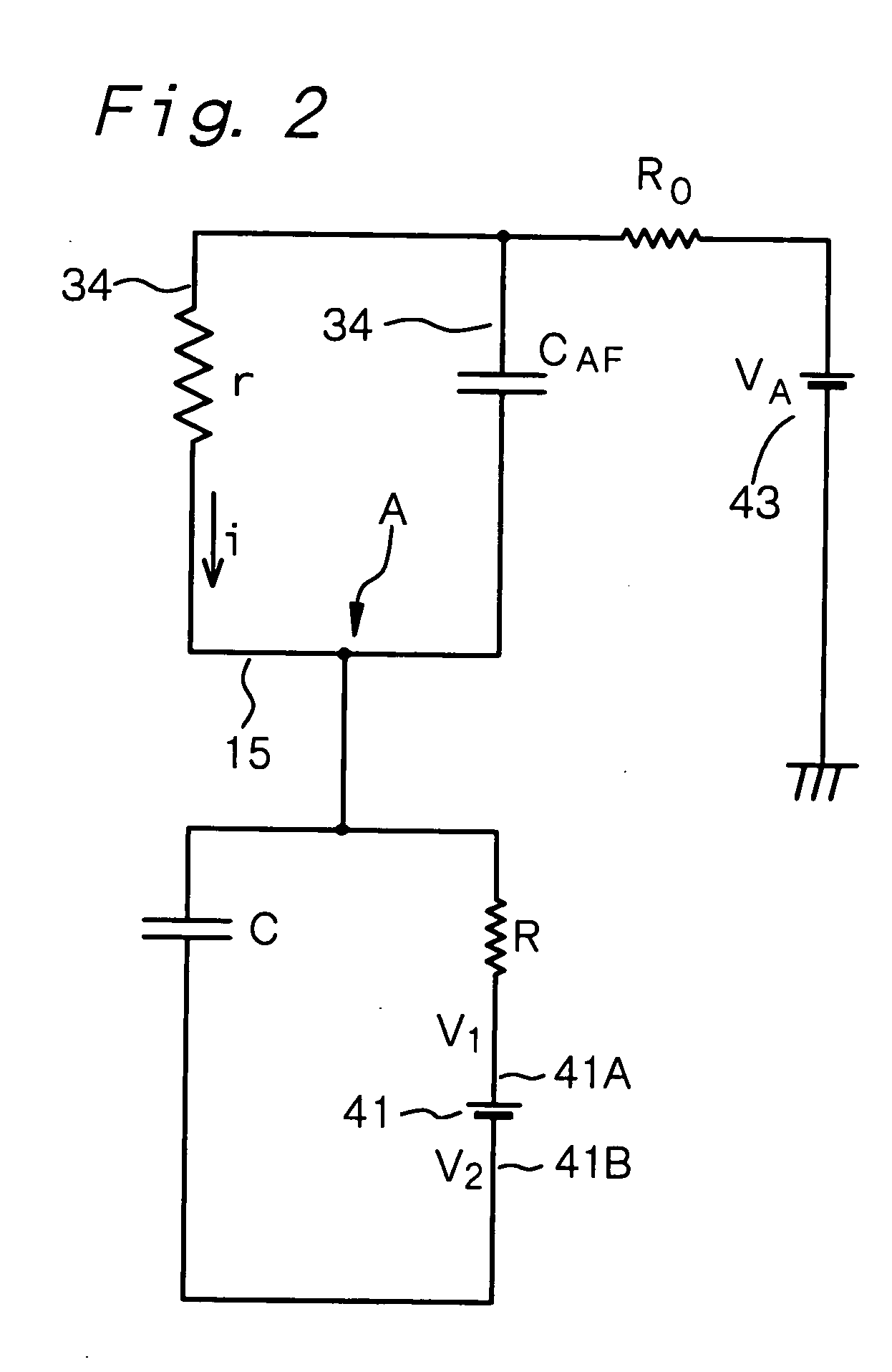Cold cathode electric field electron emission display device
a display device and electric field technology, applied in the field of cold cathode field emission display, can solve the problems of high brightness and size increase, damage to field emission device, and extremely impaired display quality, so as to improve the contrast of the display screen and prevent the collision of electrons
- Summary
- Abstract
- Description
- Claims
- Application Information
AI Technical Summary
Benefits of technology
Problems solved by technology
Method used
Image
Examples
example 1
[0172] Example 1 is concerned with the cold cathode field emission display (to be abbreviated as “display” hereinafter) according to the first-A aspect of the present invention. FIG. 1 shows a schematic partial end view of a display panel for constituting a display having field emission devices, FIG. 13B shows a schematic partial end view of the field emission device, and FIG. 14 shows a schematic drawing of an electron-emitting region viewed from above. While many field emission devices are provided in an overlap region of a cathode electrode and a gate electrode, FIG. 13B shows one field emission device. When a cathode panel CP and an anode panel AP are exploded, the cathode panel CP has a schematic partial perspective view (however, an illustration of an insulating film and a focus electrode is omitted) as shown in FIG. 29.
[0173] The above display comprises at least; [0174] (A) a display panel in which a cathode panel CP having a plurality of electron-emitting regions EA and an ...
example 2
[0223] Example 2 is a variant of Example 1. Example 1 used the Spindt-type as a field emission device. In Example 2, the field emission device is a plane-type (a field emission device in which an electron-emitting portion having the form of a nearly flat plane is formed on the cathode electrode positioned in the bottom portion of the third opening portion).
[0224] An electron-emitting portion 19A constituting the plane-type field emission device in Example 2 comprises a matrix 52 and a carbon-nanotube structure (specifically, a carbon-nanotube 53) embedded in the matrix 52 in a state where the top portion of the carbon-nanotube structure is projected, and the matrix 52 is formed from an electrically conductive metal oxide (specifically, oxide-tin oxide, ITO) as shown in a schematic partial end view of FIG. 18B.
[0225] The production method of the field emission device will be explained with reference to FIGS. 17A, 17B, 18A and 18B, hereinafter.
[Step-200]
[0226] First, a stripe-shap...
PUM
 Login to View More
Login to View More Abstract
Description
Claims
Application Information
 Login to View More
Login to View More - R&D
- Intellectual Property
- Life Sciences
- Materials
- Tech Scout
- Unparalleled Data Quality
- Higher Quality Content
- 60% Fewer Hallucinations
Browse by: Latest US Patents, China's latest patents, Technical Efficacy Thesaurus, Application Domain, Technology Topic, Popular Technical Reports.
© 2025 PatSnap. All rights reserved.Legal|Privacy policy|Modern Slavery Act Transparency Statement|Sitemap|About US| Contact US: help@patsnap.com



